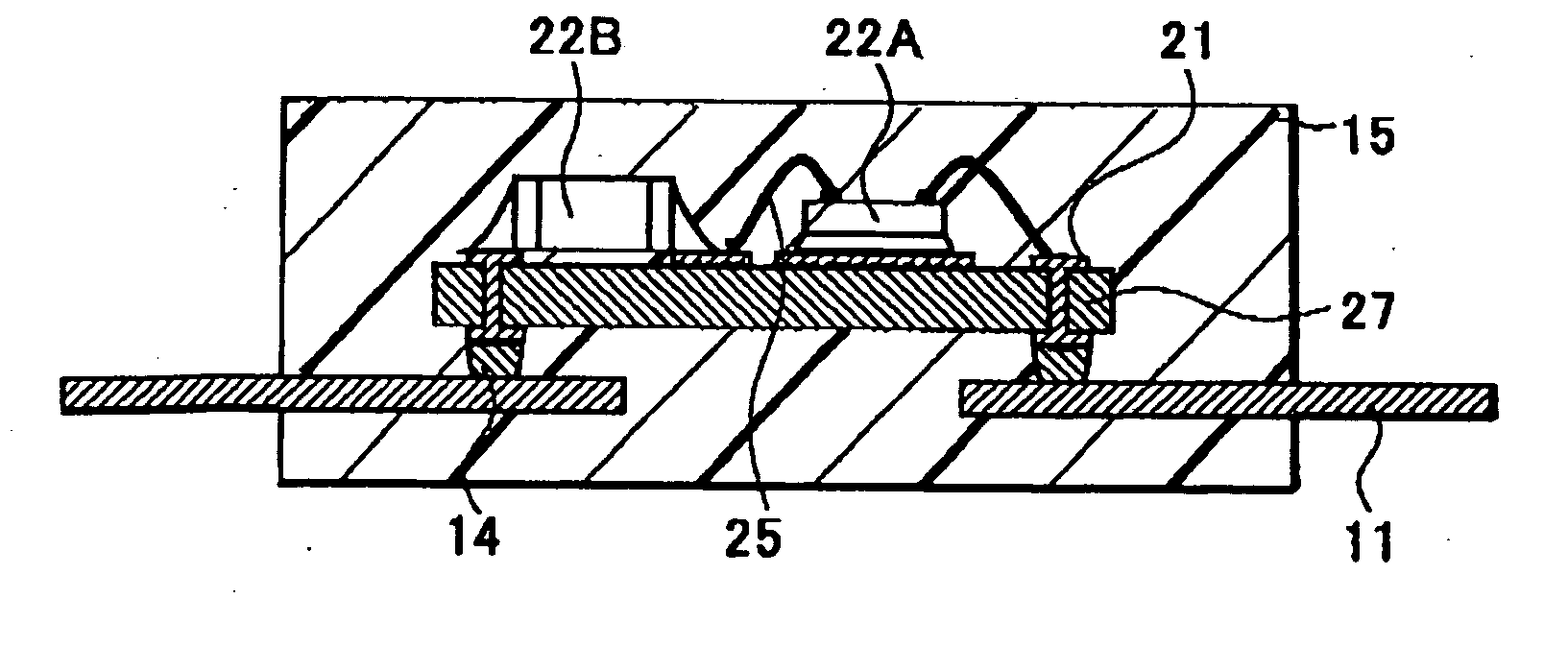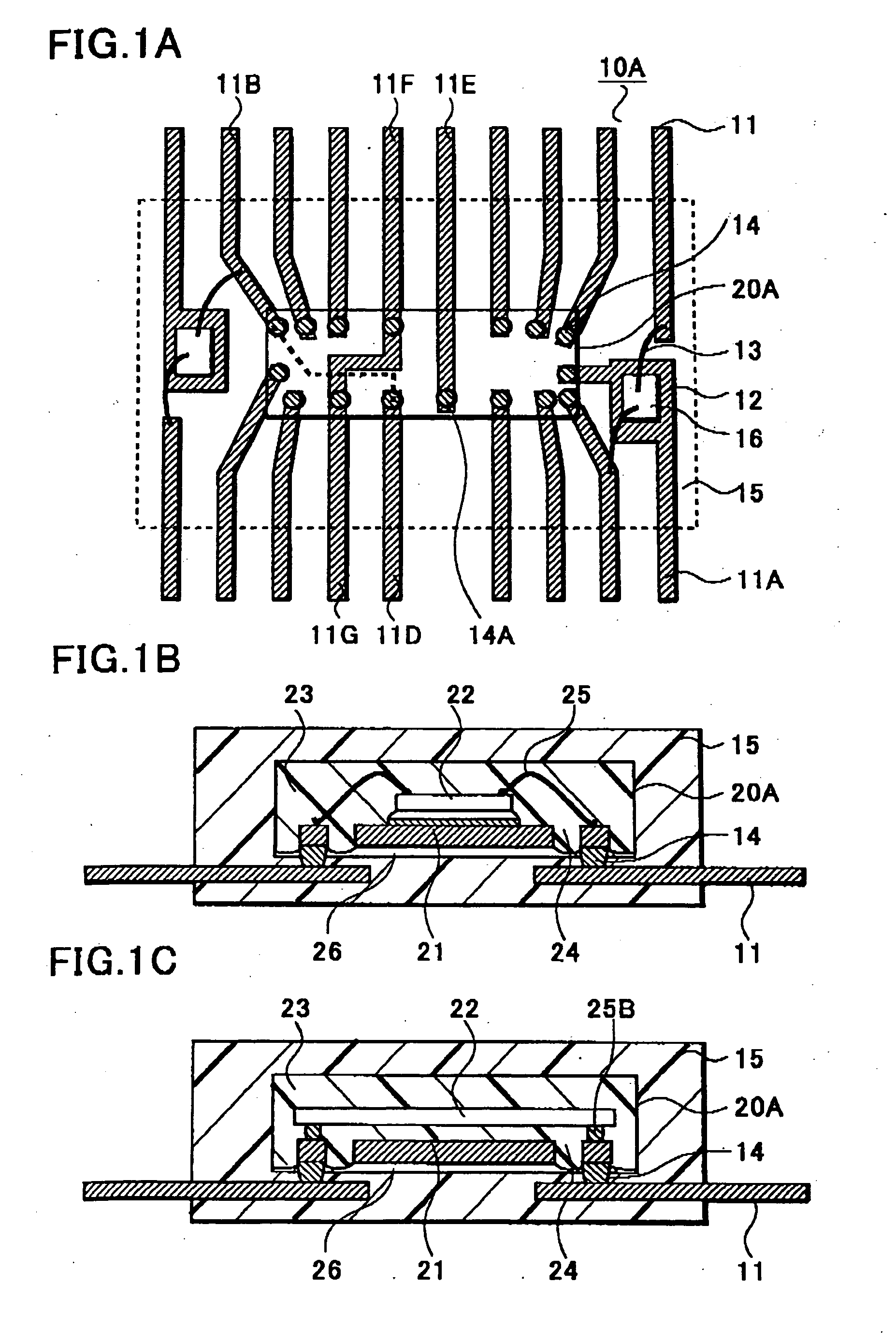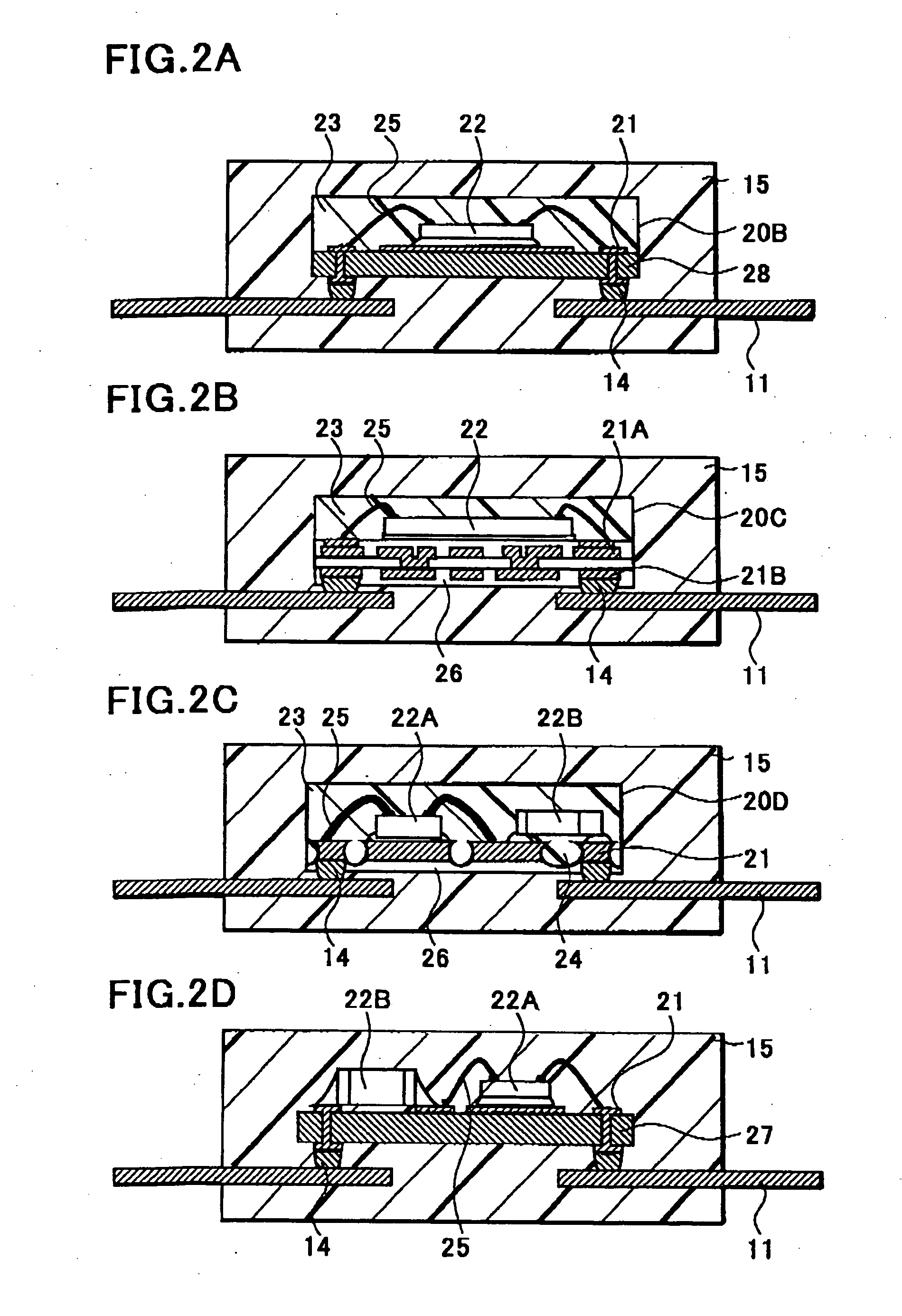Circuit module
a circuit module and circuit technology, applied in the field of circuit modules, can solve the problems of small solder balls, difficult to electrically connect these elements using a leadframe, and active elements such as lsi and/or trs,
- Summary
- Abstract
- Description
- Claims
- Application Information
AI Technical Summary
Benefits of technology
Problems solved by technology
Method used
Image
Examples
Embodiment Construction
[0025] The structure of a circuit module 10A of the preferred embodiments of the present invention will be described with reference to FIG. 1A and FIG. 1B. FIG. 1A is a plan view of the circuit module 10A, and FIG. 1B is a cross-sectional view thereof.
[0026] As can be seen from these drawings, the circuit module 10A of a preferred embodiment has a structure in which a thin-type circuit device, such as a SIP, provided with external connection electrodes is mounted on a leadframe and sealed with resin. This structure allows a large number of elements to be simultaneously incorporated therein and makes it possible to realize a module in which leads are adopted with a circuit device in which external electrodes can only be provided on the back surface thereof. Even when the circuit module 10A is mounted on a printed-circuit board, a ceramic board, or a metal board (hereinafter referred to as a mount board), thermal stress is reduced by the leads 11, and furthermore, heat release proper...
PUM
 Login to View More
Login to View More Abstract
Description
Claims
Application Information
 Login to View More
Login to View More - R&D
- Intellectual Property
- Life Sciences
- Materials
- Tech Scout
- Unparalleled Data Quality
- Higher Quality Content
- 60% Fewer Hallucinations
Browse by: Latest US Patents, China's latest patents, Technical Efficacy Thesaurus, Application Domain, Technology Topic, Popular Technical Reports.
© 2025 PatSnap. All rights reserved.Legal|Privacy policy|Modern Slavery Act Transparency Statement|Sitemap|About US| Contact US: help@patsnap.com



